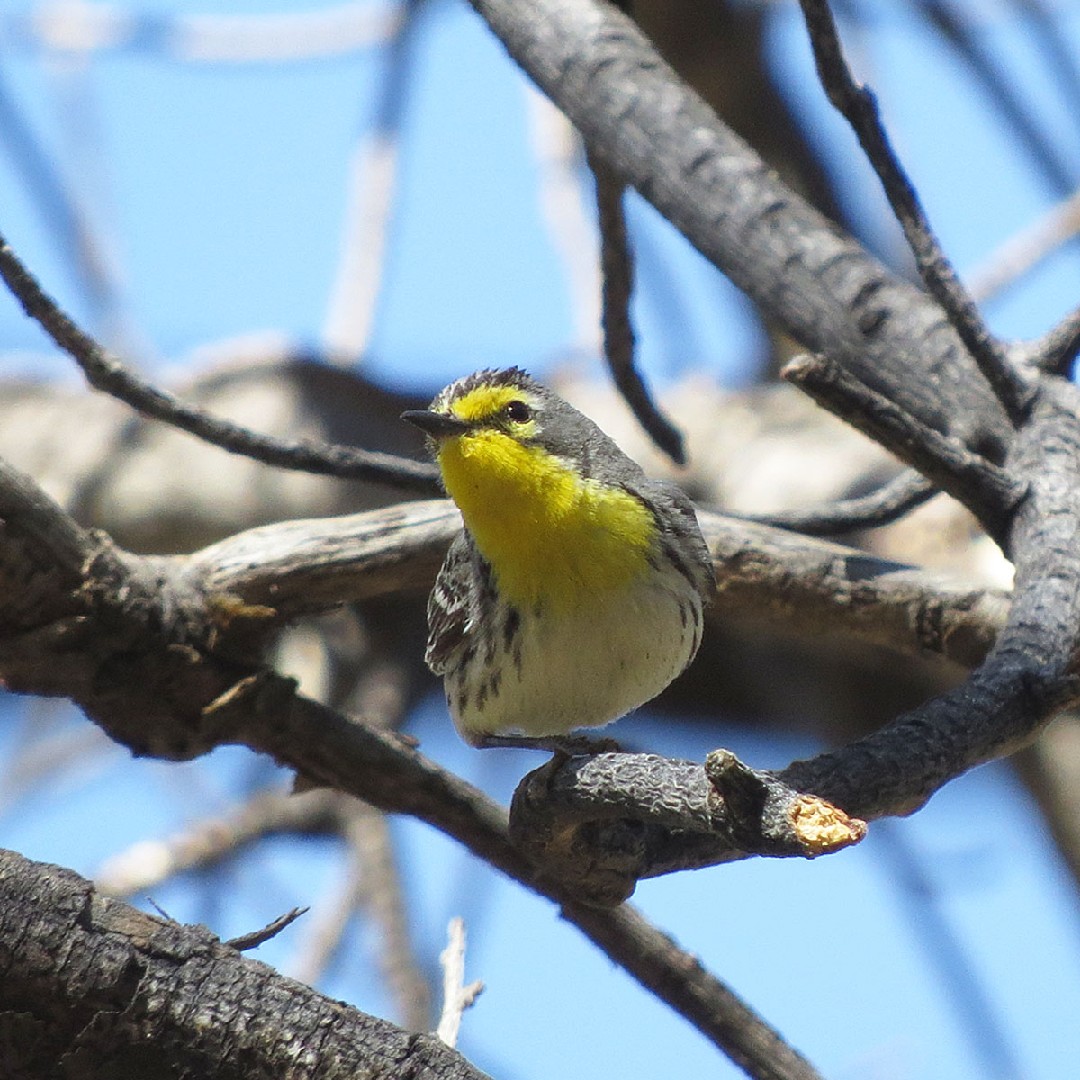Grace's Warbler
A species of Setophaga Warblers Scientific name : Setophaga graciae Genus : Setophaga Warblers
Grace's Warbler, A species of Setophaga Warblers
Botanical name: Setophaga graciae
Genus: Setophaga Warblers
Content
Description General Info
 Photo By Don Faulkner , used under CC-BY-SA-2.0 /Cropped and compressed from original
Photo By Don Faulkner , used under CC-BY-SA-2.0 /Cropped and compressed from original Description
Grace's warbler is a small bird, 11–13 cm long. It is mostly gray on top, with broken black streaks across the back and flanks and two white bars on the wings. The throat and breast are a vibrant yellow, and the rest of the underparts are white. It has a yellow half-eye ring under the eye and a long yellow "eyebrow" stripe that starts at the base of the beak and runs above the eye, fading to white after it passes the eye. 
Size
12 cm (4.75 in)
Life Expectancy
4 years
Nest Placement
Tree
Feeding Habits
Grace's Warbler primarily consume insects like beetles, flies, dragonflies, caterpillars, and spiders. They forage nimbly in the upper parts of mature pines, along smaller branches and in needle clusters, occasionally in oaks, and may catch prey in flight or on the ground.
Habitat
Grace's Warbler inhabits mature pine and pine-oak forests in mountainous terrains, preferring mid to high altitudes conducive to dense coniferous vegetation. Their range extends from lowland pine savannas to high-elevation spruce-fir forests. During migration or wintering periods, grace's Warbler seeks similar habitats, steering clear of low-elevation deserts and non-forested areas.
Nest Behavior
The female grace's Warbler is responsible for selecting the nest site and constructing the nest. Egg-laying patterns and the timing of nest building are not specified.
Nest Characteristics
Grace's Warbler's nest is typically situated within a pine needle cluster near the outer edge of a tree, over 30 feet above ground. It is constructed as a flat cup combining plant fibers, wool, animal hair, and string, bound with spiderweb. The interior is lined with feathers, fine grasses, rootlets, and hair. The nest measures approximately 2.7 inches across and 2.2 inches in height, with the inner cup being 1.8 inches across and 1.3 inches deep.
Dite type
Insectivorous
General Info
Feeding Habits
Bird food type
Bird Feeder Type

Small Tube Feeder

Platform
Sounds
Song
Recording location: Mexico
Behavior
Grace's Warbler demonstrate distinct territorial behavior soon after returning to their breeding areas, with males singing to attract mates and establish boundaries. This courtship, including song and following females, spans several weeks—a lengthy period amongst warbler species. Nesting is a female-led endeavor, from site selection to construction, while males actively protect territory and repel rivals. Both sexes participate in incubation and rearing the young, and post-fledging, grace's Warbler families forage collectively, often joining other warblers and woodland species like Mexican Chickadees and Bridled Titmice, indicating a social aspect to their otherwise territorial nature.
Distribution Area
Grace's warblers breed from the south-western United States to Nicaragua and winter in their breeding range from north-eastern Sinaloa and north-western Durango south. They are almost always found in pine forests, even in migration, though at the northern end of their range (in southern Nevada and Utah and southwestern Colorado) they occur in spruce-fir forest. They prefer open, "parklike" woods, and in some areas such as northern Arizona they prefer an understory of Gambel's oak. In the United States and northern Mexico they typically occur at altitudes of 1,800 to 2,700 metres (5,900 to 8,900 ft)); farther south they may occur as low as 250 m. They are common in some localities, and in areas of the Mosquitia of Nicaragua where the only tree is the Caribbean pine, Grace's warblers may be the only bird seen. 
Species Status
Not globally threatened.
Scientific Classification
Phylum
Chordates Class
Birds Order
Perching birds Family
New world warblers Genus
Setophaga Warblers Species
Grace's Warbler